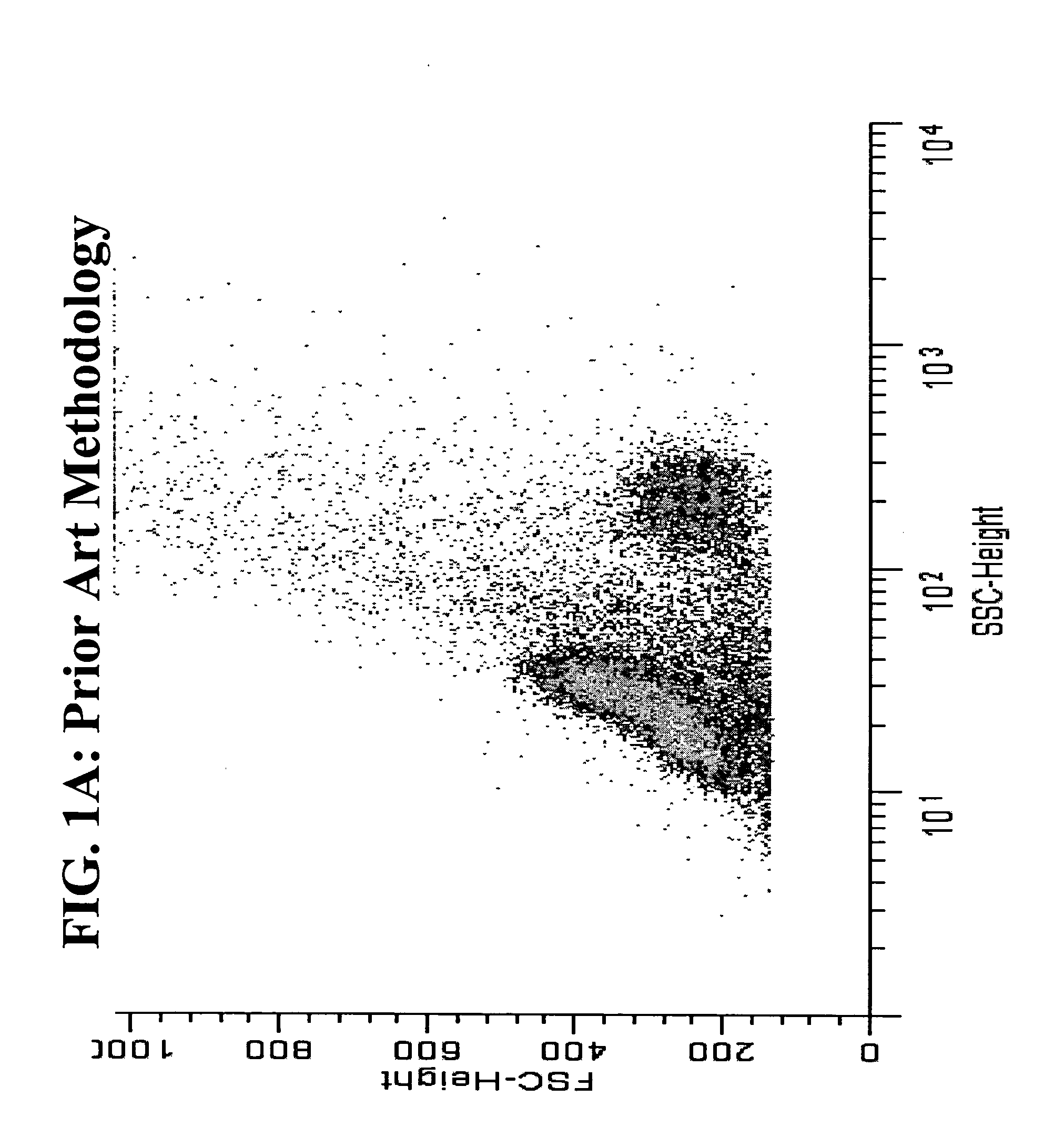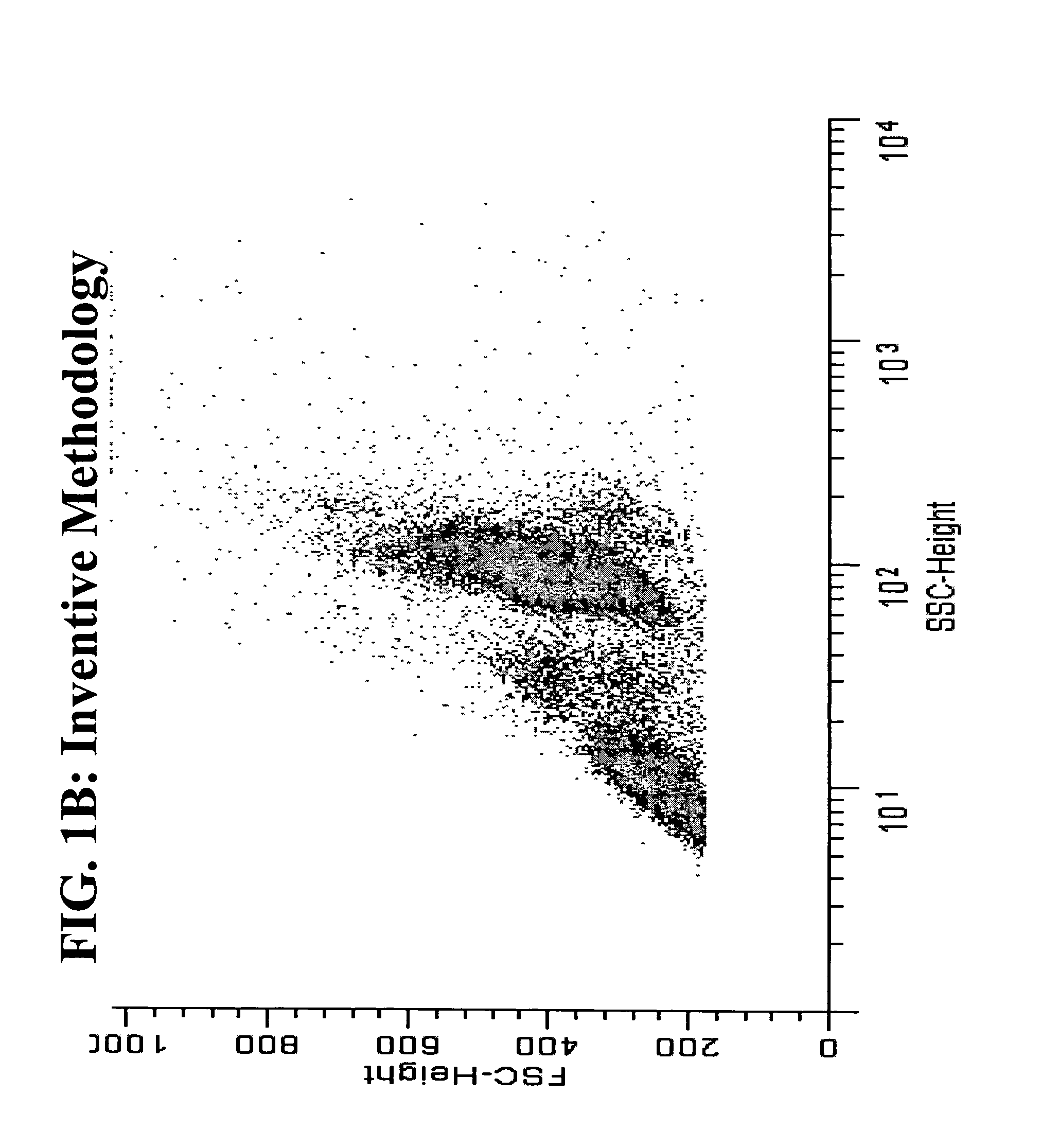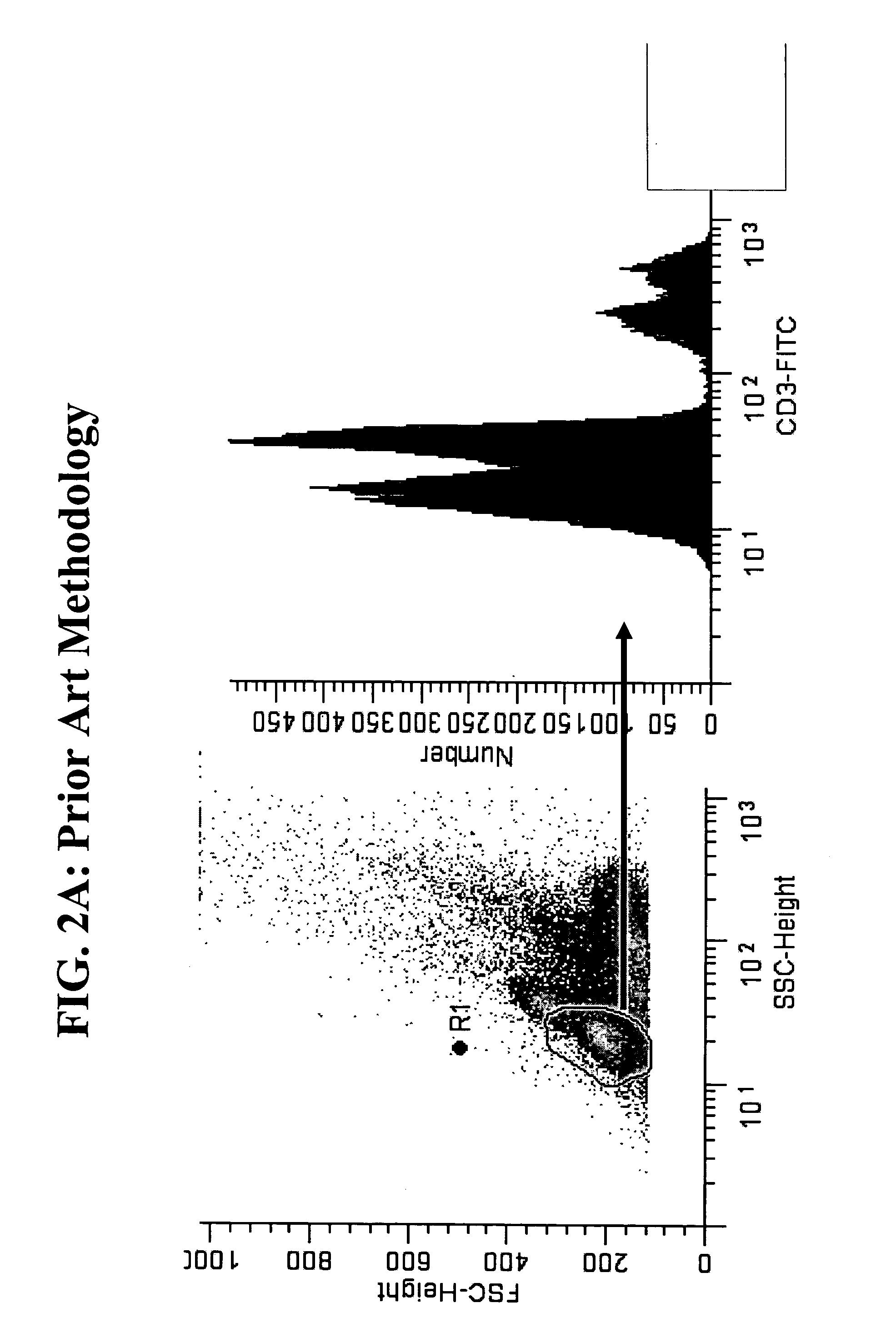Cell fixation and use in phospho-proteome screening
- Summary
- Abstract
- Description
- Claims
- Application Information
AI Technical Summary
Benefits of technology
Problems solved by technology
Method used
Image
Examples
example 1
Fixative Method
[0035] For analysis of whole blood by flow cytometry, including evaluation based on light scatter, surface epitopes, internal epitopes, and nucleic acid content, the following protocol was employed:
[0036] 1. Sterilely place 100 μl of whole blood or 50 μl of whole marrow in each of the 2 tubes for each antibody combination desired.
[0037] 2. Sterilely add 2 ml of standard culture media to each tube and vortex briefly to mix.
[0038] 3. Add 4 times saturating amount (as determined by titration) of desired anti-surface-epitope antibodies to each tube.
[0039] 4. Add any growth factors or inhibitors required by study at this point. In this case, activation of the MAP Kinase cascade was studied, requiring stimulation of the cells with PMA.
[0040] 5. Add 50 μl of stock PMA solution to the “PMA” tubes and vortex briefly to mix. Start timer immediately and place tubes in 37° C., 5% CO2 incubator for the exact pulse time required (either determined by previous studies, antibod...
example 2
Heat Fixation
[0052] The use of OPF or PermiFlow™ as a fixative, permeation and lysis reagent was introduced in the original publications describing the product (4a, 4b, 5). However, to our knowledge this reagent has not been previously used for the detection of phospho-epitopes. Chow (1) and Perez (2) have studied phospho-epitopes by flow cytometry, but with the older paraformaldehyde / methanol based fixatives. The use of paraformaldehyde and methanol fixation is known to be detrimental to many surface epitopes and is emphasized in both the Chow (1) and Perez (2) articles.
[0053] The use of heat in antigen retrieval systems in immuno-histochemistry is well documented, but is typically not used in flow cytometry because researchers desire to slow down or stop metabolic activity and preserve intact cell morphology and status during fixation. Therefore, fixation is typically performed on ice or at room temperature. We have compared room temperature fixation to 43° C. fixation using the...
PUM
| Property | Measurement | Unit |
|---|---|---|
| Temperature | aaaaa | aaaaa |
| Temperature | aaaaa | aaaaa |
| Fraction | aaaaa | aaaaa |
Abstract
Description
Claims
Application Information
 Login to View More
Login to View More - R&D
- Intellectual Property
- Life Sciences
- Materials
- Tech Scout
- Unparalleled Data Quality
- Higher Quality Content
- 60% Fewer Hallucinations
Browse by: Latest US Patents, China's latest patents, Technical Efficacy Thesaurus, Application Domain, Technology Topic, Popular Technical Reports.
© 2025 PatSnap. All rights reserved.Legal|Privacy policy|Modern Slavery Act Transparency Statement|Sitemap|About US| Contact US: help@patsnap.com



